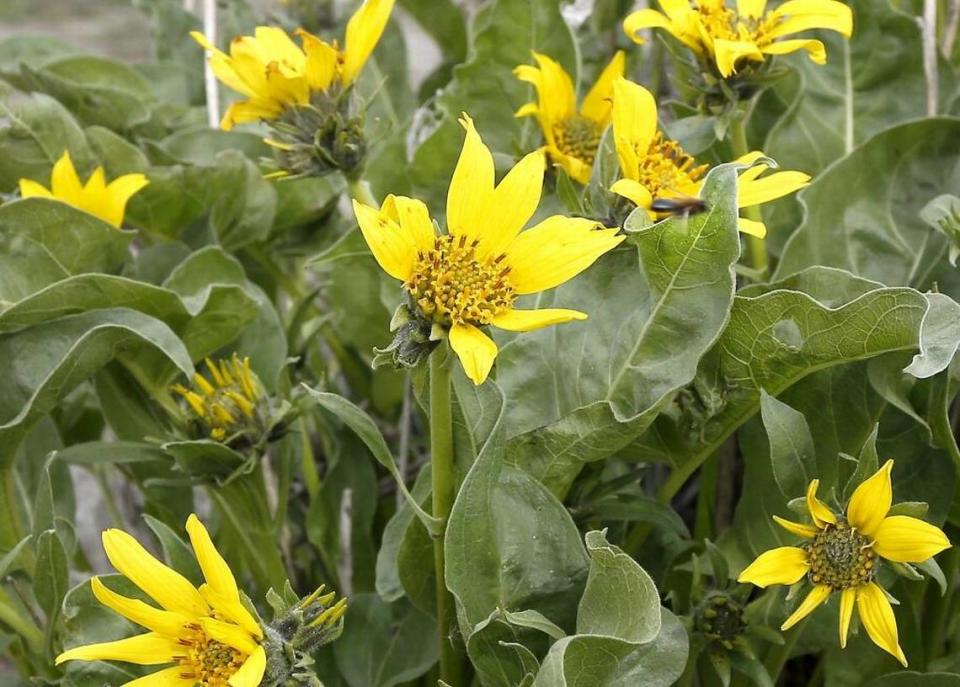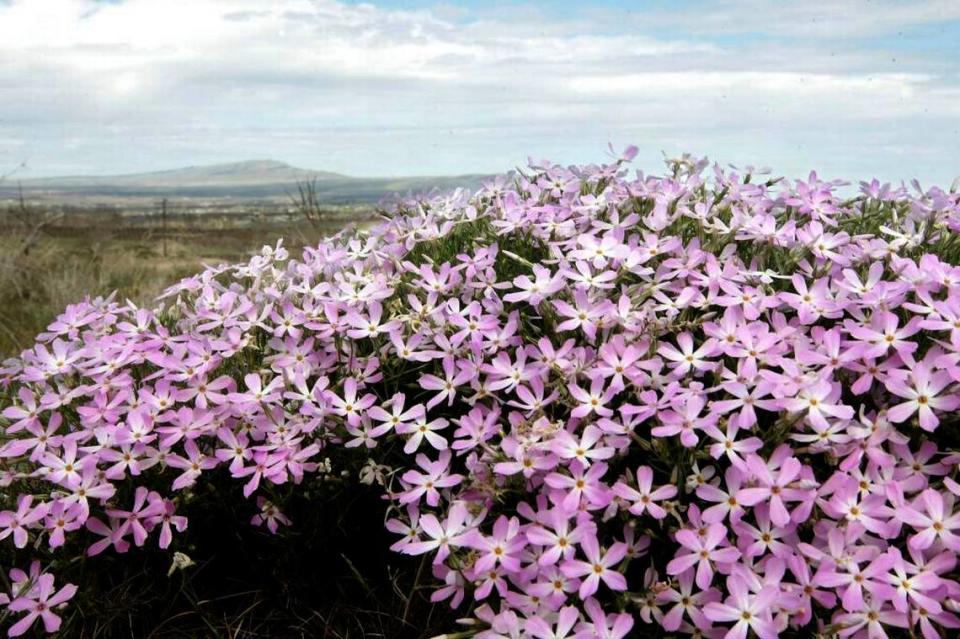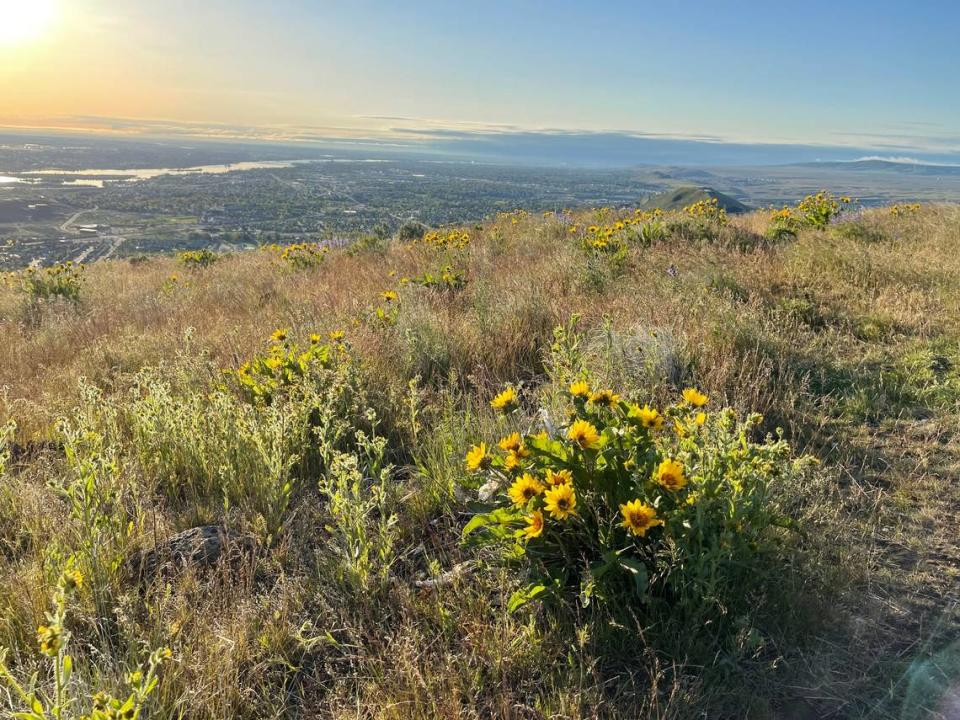April is Native Plant Appreciation Month. How to find wildflower blooms around Tri-Cities
Native Plant Appreciation Month kicked off April 1, just as regional wildflowers and other plants begin to bloom. This inspired the Columbia Basin Native Plant Society and the local REI to host a presentation on local wildflowers at the Richland Public Library.
The multi-part presentation began with botanist Alexis Sullivan, who went over how to responsibly recreate in our climate. Before going out to find wildflowers blooming, you must first know how to conduct yourself in nature. Sullivan went over the leave no trace principles and essentials for hiking and botanizing.
Sullivan was followed by Janelle Downs, who has been a botanist and plant ecologist for over 40 years. She took attendees on a virtual wildflower walk, pointing out what blooms where in the region.

Leave no trace
The Leave No Trace organization is focused on educating people on how to care for the outdoors. The organization coined seven principles of leaving no trace, which Sullivan reviewed at the early April event. While neither organization is formerly affiliated with Leave No Trace, many nature-based groups stress these principles. Not all seven principles will apply every time you’re looking for wildflowers, but they’re still important to know.
Plan ahead and prepare
To plan ahead and prepare, Sullivan suggests you know before you go. Consider what the goal is, an approximate speed and time, how many people are going and other details, then prepare accordingly.
Travel and camp on durable surfaces
Traveling on durable surfaces is more complicated than people think. Regional wildflowers bloom in a sagebrush steppe habitat, a “widespread yet fragile ecosystem,” according to the National Wildlife Federation. If you often hike in the area, you may have seen signs reading “Don’t Bust the Crust.” A crust is a symbiotic organism, or a living thing made up of multiple different living species. They can look like a big clump of dirt, making it easy to walk on and destroy an entire ecosystem. It’s best to just follow the trail, but if you must leave the trail, step carefully and with purpose.
Dispose of waste properly
Disposing of garbage properly means more than just plastic. Anything you bring into nature should be taken back out. Even apple cores, orange peels and other things commonly left behind, as it can be unsafe for the nearby flora and fauna. This goes hand-in-hand with principle four, leave what you find.
Leave what you find
Don’t pick flowers, take plants home or otherwise disturb nature by moving things, it could also have disastrous impacts in the ecosystem. “Every flower picked is a flower that might not get to bloom next year,” Sullivan said.
Minimize wildfire impacts
Respect wildlife
When out in nature, you are in wildlife’s home. Do not disturb wild animals or their ecosystem.
Be considerate of other visitors
When it comes to being considerate of other visitors, Sullivan offered a few key tips. You should already be removing waste, but definitely clean up after yourself and any animals you bring with you. Check for restrictions before bringing pets. Out of respect for others and for animals, do not bring a speaker to blast music in nature. Downhill hikers should yield to uphill bikers, but botanists yield to everyone since they tend to take their time.
Wildflower hiking essentials
There are ten hiking essentials you should bring with you out into nature. No matter how short or simple your trip is planned to be, always be prepared for the unforeseen:
Navigation capability
Headlamp
Sun protection
First aid
Knife or multi-tool
Fire starter tools
Shelter
Extra food
Extra water
Extra clothes
To get the 14 botanizing essentials, simply add these three things:
Hand lens (or backwards binoculars)
Wildflower guide
Co-op membership

Regional wildflower blooms
Found in rocky soils like Badger Mountain, Candy Mountain, Saddle Mountains
Bitterroot - Lewisia rediviva - Flowers from April to June
Rock buckwheat, round-head - Eriogonum sphaerocephalum - Flowers from May to July
Thyme buckwheat - Eriogonum thymoides - Flowers from April to June
Hood’s phlox - Phlox hoodii - Flowers from April to June
Rosy balsamroot - Balsamorphia careyana - Flowers from April to May

Found in silt loams like McBee Grade, Red Mountain, Badger Mountain
Yellow bells, yellow fritillary - Fritillaria pudica - Flowers from March to June
Carey’s balsamroot - Balsamorphiza careyana - Flowers from March to July
Silky lupine - Lupinus sericeus - Flowers from May to August
Long-leaf phlox - Phlox longifolia - Flowers from April to June
Thompson’s paintbrush - Castilleja thompsonii - Flowers from May to September
Nine-leaf desert parsley, triternate biscuitroot - Lomatium triternatum - Flowers from April to July
Douglas cluster lilly - Triteleia grandiflora var. grandiflower, formerly Brodiaea douglasii - Flowers from April to June
Upland larkspur, common larkspur, Nuttall’s larkspur - Delpinium nuttallianum - Flowers from March to August
Woolly pod milkvetch, Pursh’s milkvetch - Astragalus purshii - Flowers from April to June
Crouching milkvetch - Astragalus succumbuns - Flowers from April to June
Piper’s daisy - Erigeron piperianus - Flowers from May to June
Where to find wildflowers
Local expert botanists have several recommendations for regional places to look at wildflowers:
Around Tri-Cities
Badger Mountain
Candy Mountain
McBee Grade
Hanford Reach National Monument
White Bluffs
Amon Creek Preserve
Chamna Preserve
Tapteal Greenway
Horn Rapids Park
Rattlesnake Slope Preserves
Leslie Groves
Greater region
Blue Mountains
Wallula Gap
Vantage
Frenchman’s Coulee
Cowiche Canyon
Columbia River Gorge in Washington or Oregon.
More information on each location is available on the Plant Society’s website.

